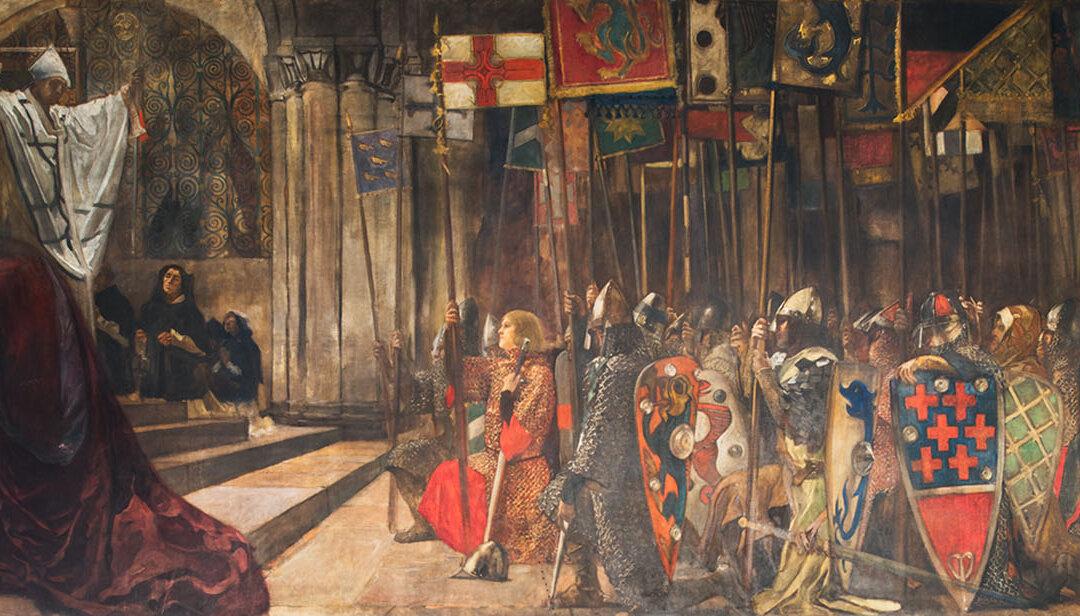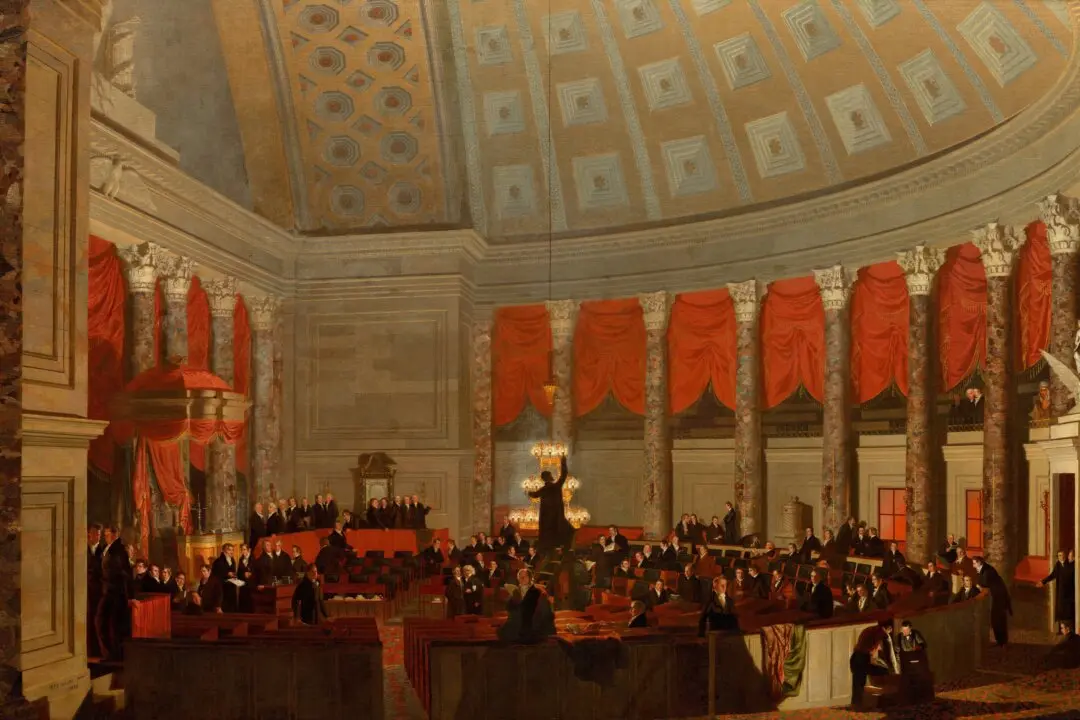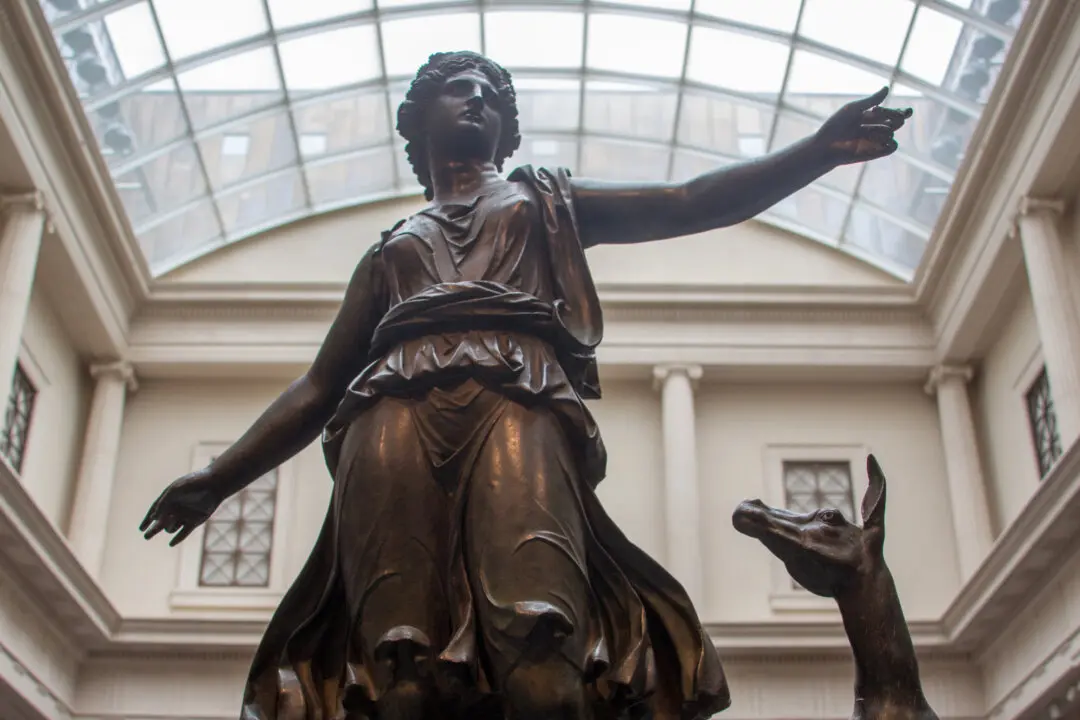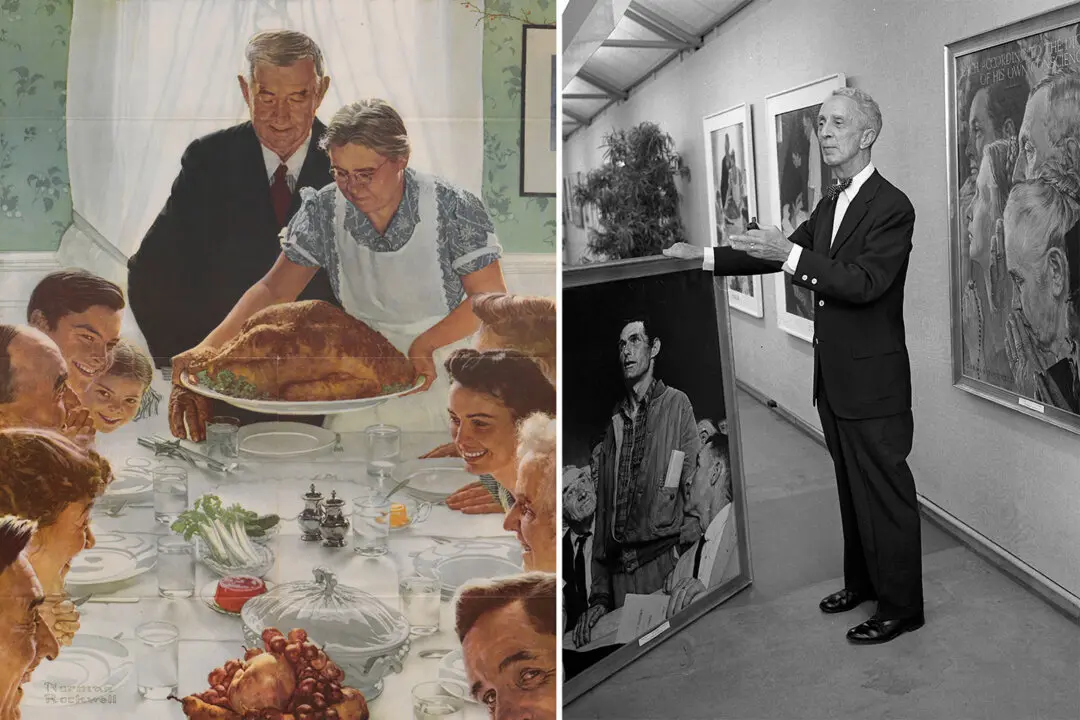Boston is rich with museums, but one of the city’s most important artwork cycles is on display in a library. The Boston Public Library’s former Book Delivery Room is distinctively adorned with 15 commissioned murals depicting the heroic Sir Galahad in an extended narrative titled “The Quest and Achievement of the Holy Grail.”
The construction of this room, completed in 1895, features wooden paneling, green-flecked levanto marble doorway columns, a rouge antique marble fireplace, and a Venetian palazzo-inspired decorated ceiling. It is a befittingly noble setting for the presentation of the Arthurian legend. Now known as the Abbey Room, the room is named for the American artist Edwin Austin Abbey (1852-1911) who created the murals.





